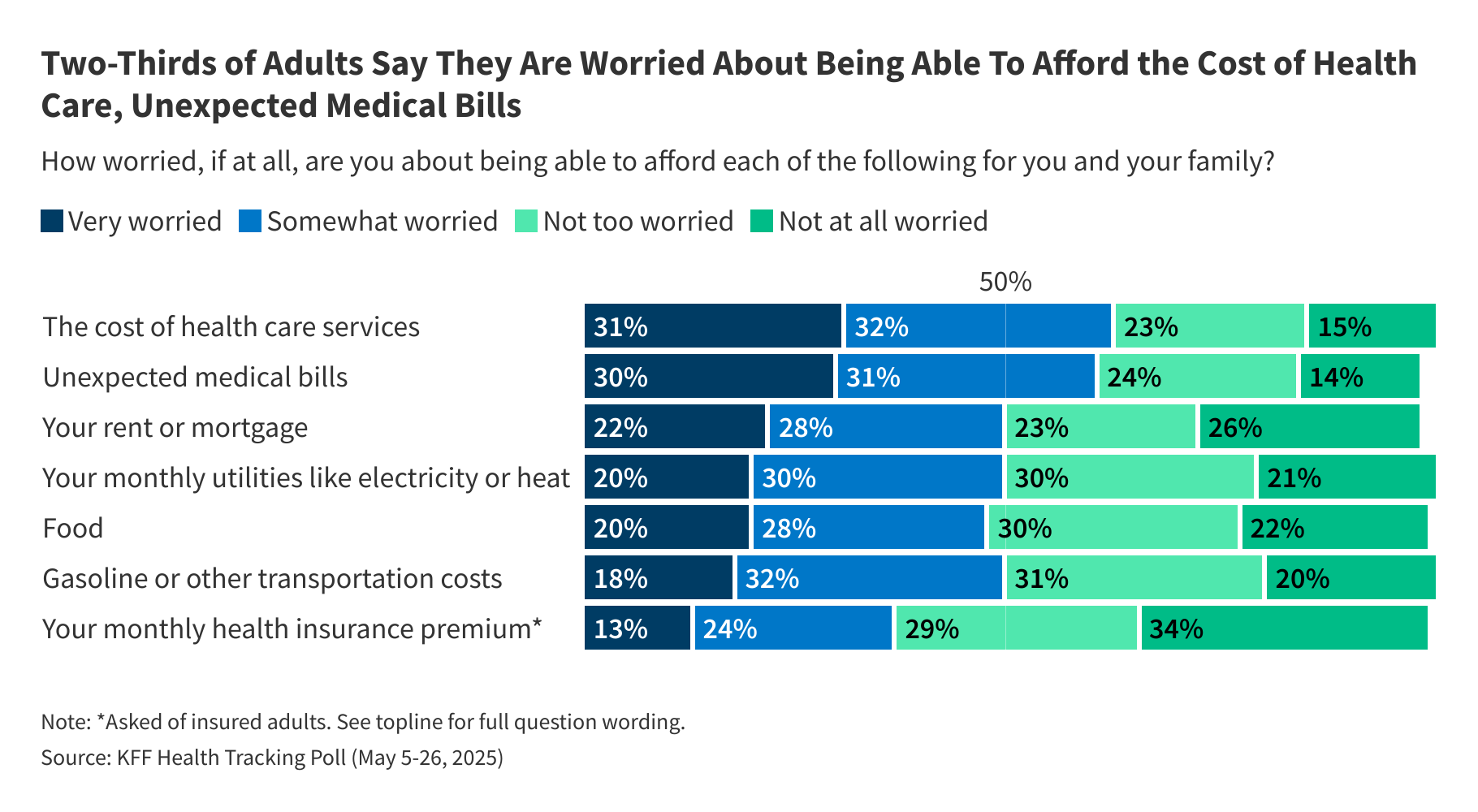Hospitals and health systems, by and large, are going into 2025 on better footing than a year ago, as financial and operating performance stabilized.
Key indicators like operating margins, outpatient revenue and average length of stay improved from 2023 and have held steady in the back half of the year, according to advisory firm Kaufman Hall.
For many providers, volumes have rebounded to above pre-pandemic levels. This is particularly true for health systems in high growth markets, though many systems in stagnant service areas are also experiencing volume gains, according to a Fitch Ratings report issued in early December.
In October 2024, the mean operating margin for hospitals was 4.4%, up from 2.5% in November 2023 and 2.7% in December 2023, data from Kaufman Hall’s most recent National Hospital Flash Report (PDF) finds.
Outpatient revenue has been steadily increasing over the past few years, indicating a shift in how patients seek care.
Additionally, discharges per calendar day increased from September 2024 to October 2024, leading to a decrease in overall expenses on a volume-adjusted basis despite continued growth in supplies and drug expenses. Average length of stay also improved, declining 3% from September and by 4% compared to October 2023.
Kaufman Hall determined a median monthly operating index of 6.5% in October 2024. The monthly operating index grew from September’s 3.5%, which fell from the 4.6%vmonthly operating index seen in August.
“The most prominent, contributing factor to this stabilization was volumes and generally seeing, not only a return of volume, so volumes tend to be relatively strong even if you compare against pre-pandemic levels, but perhaps more importantly, the amount of fluctuations in those volumes from month to month have subsided substantially,” Erik Swanson, senior vice president and group leader of data and analytics at Kaufman Hall, told Fierce Healthcare in an interview. “With that attenuation of that variation on a monthly basis that has allowed hospitals to be able to plan and deploy resources, both labor and non-labor resources, more effectively to meet those needs.”
In early December, Fitch Ratings bumped its credit outlook for the nonprofit hospital sector to “neutral” from “deteriorating, citing the sector’s “steady and notable improvement” in operating margins following considerable margin compression over the last three years. The rating agency downgraded its outlook for the U.S. not-for-profit hospital sector to “deteriorating,” 27 months ago, in August 2022, primarily citing significant labor cost pressures and broader macroeconomic inflationary issues.
Labor expenses have dropped and inflationary pressures have subsided, while balance sheets are benefiting from improving operating cash flows and strong equity market returns, said Fitch Ratings’ Senior Director and Sector Head Kevin Holloran in the company’s December report.
“Volumes remain healthy, particularly in growth markets, leading to a renewed focus on access and capacity. The industry continues to struggle with labor shortages; however, the staffing picture has stabilized since the pronounced challenges that reached a peak in 2022,” Fitch Ratings analysts wrote.
“The sector, and particularly those providers with the resources and knowhow to reduce the use of contract labor and develop tools to enhance productivity, has adapted to recent challenges, which resulted in margins starting to stabilize and improve in the second half of 2023, a trend that continued into 2024,” Fitch Ratings’ Senior Director Mark Pascaris wrote in the report. “While staffing challenges remain, labor and inflationary pressures have eased. Along with ongoing volume growth, operating margins should continue to rebound into 2025 for the sector.”
Providers successfully reined in labor expenses throughout 2024 which contributed to the improved financial performance. During quarterly earnings calls, major nonprofit health systems reported significant reductions in contract labor costs throughout the year.
“While those levels are still a little bit above where they were from a pre-pandemic perspective, they are substantially reduced from 2022 when it reached its highs,” Swanson with Kaufman Hall said. “The reliance on that very expensive labor has decreased, and because the industry as a whole required less of that contract-type labor, the rates at which those agencies could charge have also dropped.”
Health systems have taken different approaches to reduce labor costs including recruitment and retention strategies to diminish reliance on contract workers and using technology to make staff more efficient.
“We’ve seen the ingenuity and resiliency of health system leaders to tackle workforce issues and they’ve made big inroads in that,” said Rick Gundling, senior vice president of the Healthcare Financial Management Association, in an interview.
Hospitals are on the road to a gradual and sustained recovery after facing macro labor and inflationary headwinds that became particularly acute in 2022. But, it’s not a completely sunny forecast for the sector going into the new year.
Here are the trends that could impact providers’ financial performance in 2025 and the key issues that are top of mind for hospital and health system leaders:
Revenue growth will drive improved operating margins
Fitch expects core credit drivers for the sector to continue to show slow yet steady improvement in 2025, with a forecasted median operating margin of 1% to 2%, barring unforeseen shocks.
Fitch’s 2024 medians (based on FY 2023 audits) showed moderate but steady improvement in operating margins. “This trend accelerated through the year, with the median operating margin for December 31 fiscal year-ends at 0.8%, versus 0.4% for the full sample for the year. Fitch expects this trend will continue through 2024 and into 2025. The sector is not out of the woods, however, as margins continue to lag pre-pandemic trends, as the FY 2019 median operating margin was 2.3%,” Holloran wrote in the report.
A Moody’s Ratings report released in November estimated median operating cash flow margin will improve to 7%, up from about 6% in 2024, driven by stronger revenue growth. The operating cash flow margin will remain below the pre-pandemic median of 8% to 10%.
“But the pace of margin improvement is slowing, and not all hospitals have reached this level of profitability. This
combination suggests a longer recovery from the pandemic than we previously expected,” Moody’s analysts wrote.
“Operating cash flow growth will be fueled by stronger revenue growth and stricter cost controls. Healthy increases in commercial insurance reimbursement rates, volume recovery and greater adoption of state-directed payment programs will drive the revenue growth. Cost controls will come from tighter expense management, including a slowdown in the growth of labor, medical supply and drug costs,” Moody’s wrote in the report.
Ongoing shift to outpatient care, widening performance gaps
Hospital finances overall are holding steady, but the gap between financially successful hospitals and those that are struggling is widening, Kaufman Hall’s Swanson said.
“2024 was certainly a period of stabilization. However, it was also a year in which we continue to see the variation between the top performers and bottom performers grow. So while overall, the industry seemed to stabilize, the distribution of some of those gains and losses were unequally spread,” he said,
The ongoing shift to providing more care in outpatient settings is helping hospitals find stable financial footing, but could also exacerbate this growing performance gap, he noted.
“In pre-pandemic years, the one metric that was most closely associated with hospital financial performance was ED visits. That trend broke during the course of the pandemic, and now what we find is one of the metrics more closely correlated is the volume that’s being derived from the clinician or primary care medical groups as part of those systems,” Swanson said.
“Organizations that have an ambulatory footprint, and for hospitals with substantial hospital outpatient-type departments, the ability to move care into those settings has generally been a way in which organizations have strengthened themselves,” he noted. “But not all organizations have that ambulatory footprint and not all hospitals have that size of outpatient departments. For those that do not have that, they have typically struggled as compared with those who did have strong ambulatory presence and have generally improved.”
Swanson expects the increase in outpatient activity to continue in 2025. To support this shift, health systems’ capital spending will be focused on IT and developing ambulatory networks, as improving access points is a top priority, Fitch Ratings’ Holloran wrote in the agency’s report.
Providers will look to diversify their portfolios and expand their footprint in areas like surgery centers, urgent care clinics and imaging. This could drive more M&A activity in the ambulatory space.
“With this growing divide between top and bottom performers, that is also going to drive some activity there as well, because some of those lower-performing organizations may, frankly, have to ask themselves some of those existential questions: Can they remain independent or not, or do they need to find some strategic partners, or perhaps some other type of relationship to maintain themselves?” Swanson said.
According to Kaufman Hall’s report, outpatient revenue per calendar day increased 7% from September to October 2024 and 13% year-over-year, outpacing inpatient revenue’s growth of 1% and 6%, respectively.
Supply, drug costs putting pressure on hospitals
For many health systems and hospitals, patient volumes have rebounded to above pre-pandemic levels, making a reduction in clinical staff unfeasible.
While labor expenses remain above pre-pandemic levels, the rate of personnel cost inflation has cooled considerably, as year-over-year average hourly earnings growth for hospitals has been consistently below 4% through the first 10 months of 2024, according to Fitch Ratings’ labor tracker data.
While labor expenses have eased, hospitals and health systems are feeling the squeeze from ballooning costs in other areas, such as spending on medical supplies, drugs and purchased services.
“The non-labor side of expenses have proven to be quite challenging,” Swanson said.
Labor expense per calendar day was up 7% from October 2023 to October 2024, according to Kaufman Hall’s report. But, non-labor expense per calendar day was up 10%, supply expense grew 13% year-over-year, purchased service expense also rose 13% and drug expense grew 15%.
“I think that we’re going to continue to see those headwinds throughout the course of 2025 and unfortunately, this is one of these areas where the levers that an organization can pull to adjust this are not so easy and not as quickly acting as they might be on the labor side,” Swanson said. “So, this will certainly pose some challenges.”
Purchased services include areas like environmental, laundering and linen, security and maintenance. “Due to some broader inflationary pressures, many of those vendors have increased their prices, and there are very little signs to show that will abate as well. I think we’re going to continue to see those pressures, and for that, many organizations may pursue or rethink actually doing some of those services in-house, rather than purchasing them through a vendor,” Swanson said.
Hospitals also are contending with an increase in administrative costs associated with payer requirements, according to Aaron Wesolowski, vice president of research strategy and policy communications at the American Hospital Association (AHA).
“That’s been a big issue with hospitals recently, the cost, burden and time associated dealing with, specifically, certain practices that insurers have put in place around prior authorization and delays in payments,” he said in an interview.
Recent data from Strata Decision Technology show that administrative costs now account for more than 40% of total expenses hospitals incur in delivering care to patients, according to an AHA report released in October.
There is a growing national conversation around prior authorization and policies that impact access to care and the cost of care, particularly as patients take on higher out-of-pocket expenses for medical care, HFMA’s Gundling noted. It’s possible the incoming Trump administration may take steps to issue guidance to streamline prior auth, Gundling said.
As the U.S. population ages, this demographic shift also will impact hospital expenses. “With an aging population and with this shift to the ambulatory settings, it’s entirely possible, and we could expect this on a long-term basis, that sicker and sicker patients will be cared for within the hospital and those who have lower acuity needs will be cared for in those other sites of care,” Swanson.
“The types of drugs and pharmaceuticals that those individuals need tend to be more expensive, and the utilization of those tend to be higher; so they both need more pharmaceuticals and supplies, and the pharmaceuticals and supplies are more expensive, particularly in that specialty pharmaceutical space for chemotherapy drugs and treating chronic conditions,” he added.
Policy shifts and reimbursement trends
Healthcare leaders will be keeping an eye on policy shifts that would lower the insured rate, such as by terminating enhanced subsidies for buying insurance in the Affordable Care Act marketplaces going into 2026.
The election of President-elect Trump promises to bring what could be transformative change to healthcare policy. “There is an expectation that premium subsidies and NIH funding could be particularly at risk in the short term, with potentially longer-term pressures on Medicaid programs, although to date the incoming administration appears to favor keeping many entitlements in place, especially Medicare,” Fitch Ratings’ Holloran wrote in the company’s December report.
Major policy shifts that result in a significant decline in health insurance coverage for a broad segment of the population or a material decline in net cash flows from supplemental funding will have a major impact on hospitals’ finances.
An AHA report published in May contends that reimbursement from government payers is not keeping pace with the high costs of labor, drugs and supplies as well as the rate of inflation.
Next year, CMS plans to raise payment rates for hospital inpatient and outpatient services by 2.9% on average and the agency finalized a 2.83% rate cut in physician payments for 2025.
AHA data shows that Medicare payment levels hit record lows in 2022. Underpayments from Medicare and Medicaid totaled nearly $130 billion in 2022, and Medicare paid just 82 cents for every dollar hospitals spent caring for patients — resulting in a shortfall of almost $100 billion, the hospital lobby contends.
Between 2022 and 2023, care denials increased an average of 20.2% and 55.7% for commercial and Medicare Advantage (MA) claims, the AHA argues. As the MA population continues to rapidly grow, a high volume of denied claims and delays in payment create significant cash flow challenges for health systems, Wesolowski said.
Hospitals and health systems are keeping an eye on macroeconomic disruptions that may affect payer mix, patient volumes or investment returns.
As the population ages, health systems will see a change in payer mix that shifts towards more governmental payers. ‘In some instances, they may see higher levels of under- and uninsured patients. I think that’s yet another area that organizations need to keep an eye on, particularly in managing a more challenged payer mix in upcoming years,” Swanson said.
In addition, bipartisan support is growing for “site neutral” payment proposals to equalize Medicare payments for outpatient services across various settings, potentially reducing revenues for hospitals accustomed to higher rates for hospital-based services, Moody’s analysts noted in a report.
The federal 340B program, which allows hospitals to purchase drugs at a discount and benefit from net income gains, also will face ongoing pushback from manufacturers and scrutiny in 2025, experts say.
Increased investments in cybersecurity and AI
Healthcare remains a top target for cyber criminals and health systems will continue to prioritize investment in cybersecurity. Spending by healthcare providers on cybersecurity management will continue to rise, with cyber spending as a percentage of total technology budgets climbing to an estimated 7% in 2023 from 5% in 2019, according to Moody’s.
Health systems with comparatively large cash reserves are in a stronger position to navigate the potential operational, volume, liquidity and reputational risks arising from cyber incidents, Moody’s analysts wrote.
Providers’ capital spending plans in 2025 will likely include more investment in artificial intelligence capabilities.
“A lot of executives at these organizations are continuing to contemplate and understand what will be the impact of some of these more advanced technologies and what role advanced analytics will play relative to operations and expanding of a digital footprint. I think those things will be very critical for organizations and will likely pose some promise and opportunity, but need to be done strategically,” Kaufman Hall’s Swanson said.
HFMA’s Gundling anticipates hospitals and health systems will boost investment in technologies that can help improve care processes, make clinicians more efficient and patient-facing tech tools for things like cost estimates for procedures and accessing medical records.
Publisher: Source link









